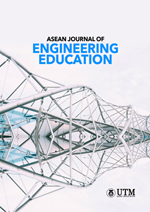Rethinking Structural Design Education through Boundary Conditions and Design Flexibility in PBL
DOI:
https://doi.org/10.11113/ajee2025.9n1.184Keywords:
problem-based learning, boundary conditions, architectural engineering pedagogy, design constraints and flexibility, curriculum innovationAbstract
This study addresses the pedagogical challenge of balancing design freedom and instructional structure in architectural engineering education through the strategic use of boundary conditions. In typical Problem-Based Learning (PBL) settings, students often face unclear task scopes or overly rigid design constraints, which can hinder creativity or reduce engagement. To overcome this, the study proposes a structured PBL model that incorporates adjustable boundary conditions to guide, rather than limit, student learning. Drawing from both structural engineering principles and educational theory, the model uses written and visual design guides to define parameters within which students work. Three types of PBL projects—task, discipline, and problem—are discussed as scalable formats offering varying degrees of design flexibility. In practice, task-based projects were primarily implemented, with discipline projects explored to test adaptability. Hands-on scaled modeling activities enabled students to experiment with different building technologies and evaluate material behavior, strengthening their understanding of real-world construction constraints. Findings suggest that controlled flexibility not only supports technical learning but also enhances motivation and critical thinking. This boundary-based framework allows instructors to recalibrate project complexity according to course goals. Future research may examine how digital platforms such as BIM can expand the adaptability and interdisciplinary potential of this model in broader curricular settings.



















